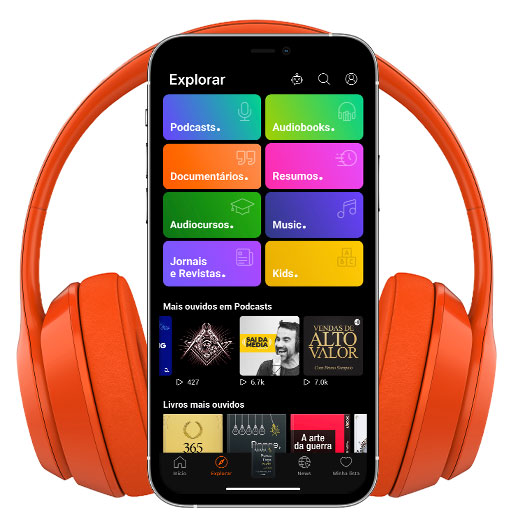Synopsis
Go Natural English helps you improve your English listening skills and fluency. The podcast will benefit intermediate to advanced learners most. Your English will benefit from language learning strategies that work, vocabulary and idioms, expressions, and phrasal verbs and how to make small talk and real conversation in American English. Learn special tips on American culture, how to listen to and speak with Americans. Join Gabby and the Go Natural English community to learn to speak American English like a fluent native!
Episodes
-
What's the Difference Between the Prepositions... IN and ON?
21/05/2019 Duration: 14min"In" is basically within, inside a container or box, maybe an enclosed space but not necessarily. "On" is related to surfaces. You can use "in" or "on" in the same sentence, but the meaning would change.
-
-
Stop being a student and start being a speaker
16/05/2019 Duration: 17minI’ve noticed that there are 2 very different ways of learning: 1 for school and 1 for real life. They keep you from speaking English, because you aren’t required to apply it in real life in order to be rewarded. Our whole education system, for the most part, is broken because we have been taught to memorize and not apply concepts in real life. “Studying” English, in the traditional sense of the word, is the antithesis of speaking English. Let’s talk about the difference between studying and learning and speaking English “To study” means to read about it. To memorize lists of vocabulary words. It means you relegate the subject to study sessions, blocks of time when you might sit quietly at home in your room or maybe a desk at the library. Where does this get you? Maybe it gets you a better grade in your class if you have a quiz on vocabulary or grammar. Maybe it makes you feel better in the short-term because you don’t have to take any risks, like being embarrassed of the way you speak. It’s so
-
Regional Accents in American English
13/05/2019 Duration: 11minSee the summary and the video here: https://www.gonaturalenglish.com/regional-american-english-accents/ SUMMARY OF REGIONAL AMERICAN ENGLISH ACCENTS There are around 160 recognized dialects of the English language, or regional accents. These terms are often used interchangeably. Even if you’re really into accents, it would probably be impossible to learn them all. Even native speakers can’t understand them all. For example, it’s very difficult for us American English speakers to understand Scottish English speakers! Join our American English Pronunciation course to improve your accent now. (https://www.gonaturalenglish.com/pronunciation-course/) AMERICAN ENGLISH ACCENTS: THE 4 MOST COMMON ONES If you travel around the US, you will encounter different American English accents. In this lesson we will look at 4 of the most common accents: Southern, New England, New York City, & Midwestern. Remember, these are general accent regions. Even within these regions there are smaller subdivision of accents! Hale
-
Don't be shy or creepy: 10 compliments in English to start a conversation with anyone
14/03/2019 Duration: 16min -
10 Useful English Phrases You'll Use Over and Over - Learn to Speak like a Native
25/02/2019 Duration: 14minHere are 10 Very Useful English Phrases You Need to Know Thanks so much. Please. Excuse me. I really appreciate it. Never mind. how does that sound? That sounds great. Sorry, what was that? Let me confirm... Nice to meet you. Can/could I get your... Actually... For a limited time only you're invited to my live online Master Class - The 3 Keys to English Fluency. Sign up and reserve your spot now at http://gonaturalenglish.com/keys
-
The Third Conditional in English Grammar with Examples
11/02/2019 Duration: 06minHow do you form the third conditional tense in English? The third conditional requires us to construct a sentence in two parts. We make the third conditional by using ‘if,’ the past perfect form of the verb in the first part of the sentence and then ‘would have’ and the past participle the second part of the sentence: if + past perfect, …would + have + past participle It talks about the past. It’s used to describe a situation that didn’t happen, and to imagine the result of this situation. If he had studied, he would have passed the exam (but, really we know he didn’t study and therefore he didn’t pass) If I hadn’t spent so much money in my 20’s, I wouldn’t have been poor in my 30’s (but I did spend a lot, and so I did become poor). If we had taken the subway, we wouldn’t have missed the plane (but we did not take the subway, and we did miss the plane) I wouldn’t have been tired if I had gone to bed earlier (but I was tired because I did not go to bed earlier) I would have become a lawyer if I had followed
-
SECOND CONDITIONAL - Quick & Clear English Grammar Explanation
28/01/2019 Duration: 08minSecond conditional English grammar can help you to create more complex expressions. Improve your fluency and sophistication in English! How do you form the second conditional tense in English? Did you know there are three uses for it? The second conditional requires us to construct a sentence in two parts. The second conditional uses if then the past simple tense then ‘would’ and the infinitive: if + past simple, …would + infinitive (It is considered most correct to use ‘were’ instead of ‘was’ with ‘I’ and ‘he/she/it’. However, native speakers often say ‘was.’). The second conditional tense has three uses. SECOND CONDITIONAL ENGLISH GRAMMAR FOR FUTURE IMPROBABILITY First, we can use it to talk about things in the future that are probably not going to be true. It is unlikely but not entirely impossible. Maybe there is a 1% chance. For example, you want to talk about a dream you’re imagining. If I won the lottery, I would buy a big house. (I probably won’t win the lottery) He would travel all over the world
-
FIRST CONDITIONAL Tense - Quick & Clear English Grammar Tips
10/01/2019 Duration: 05minTHE FIRST CONDITIONAL Would you like to make longer sentences? Using the conditional tenses can help you to express logical ideas and sound more fluent in your speaking. So, how do you form the first conditional grammar tense in English? This tense requires us to construct a sentence in two parts. It is created with “if” then the present simple tense, after which comes the future simple plus the infinitive: if + present simple, … will + infinitive So, this tense is used to talk about things which might possibly happen in the future. Of course, we can’t always know what will happen in the future. However, this describes possible things, which could easily come true. If it rains, I won’t go to the beach. I‘ll go to the party tomorrow if I study today, If I have enough money, I‘ll buy the concert tickets. He will be late if traffic is bad. She will fail the test if she does not study. If I see her, I‘ll tell her. FIRST VS. ZERO CONDITIONAL: The 1st conditional describes a specific situation, whereas the zero
-
THE ZERO CONDITIONAL - QUICK & CLEAR ENGLISH GRAMMAR EXPLANATION
07/01/2019 Duration: 06minUsing the zero conditional English grammar tense is a good way to improve your English, make longer sentences, and speak more like a native. How do you form the zero conditional tense in English? It requires us to construct a sentence in two parts. We can make a zero conditional sentence with two present simple verbs — one in the ‘if clause’ and one in the ‘main clause’: If / when + present simple base verb, …. present simple base verb. You can also think of it this way: — IF this, THEN that. This tense is used when the result will generally always happen. So, if water reaches 100 degrees, it always boils. It’s a fact. The result of the ‘if clause’ is always the main clause. However, we can create sentences in either order: — If + present simple, … present simple OR — Present simple… if + present simple. Notice in the second example, we don’t need a comma to separate the two parts of the sentence but in the first one we do. The ‘if’ in this conditional can usually be replaced by ‘when’ without changing the
-
The Go Natural English 7 Steps to English Fluency with Gabby Wallace
09/01/2018 Duration: 12minI want to present seven steps that you can use as a clear simple guide for learning English. You can always come back to these steps because they will help you no matter what level or stage you're currently at in English. So if you're ready to begin then let's get started. If you just follow the path that's been set out for you in English learning, you'll probably take traditional English classes. You'll let your teacher tell you what to learn. And then after months or even years of study, you'll realize you're not where you want to be. Maybe your teacher led you down a different path that they thought was interesting but didn't help you accomplish your goals. The seven steps to fluency help you to create your own goals and your own way of learning English. The seven steps to fluency are actually from inside the English Fluency Formula, an e-book that I wrote for you to help you learn English in just 15 minutes a day. So I'm gonna share them with you. Normally, you'd have to buy this ebook to read them but I
-
TOP 10 MOVIES FOR LEARNING ENGLISH
02/01/2018 Duration: 11minWhat are the top movies for learning English? And how do you choose a good movie to help you improve English skills? Watch this video lesson to find out! When I was learning Spanish, I watched every Spanish movie I could get my hands on, and it helped my listening skills, vocabulary and pronunciation -- a lot! Movies can help you learn fluent English because they show you natural language and real culture. They give you something fun to talk about with an English speaking partner, too! Top 10 Movies for Learning English: 1. Forrest Gump 2. The King's Speech 3. The Break-up 4. The Hangover 5. 500 Days of Summer 6. The Shawshank Redemption 7. Castaway 8. Toy Story 9. The Hunger Games 10. The Social Network Have you seen any of these movies? What do you think of the list? Leave a comment at https://gonaturalenglish.com (use the search box; search for "movies" and you'll find this episode post).
-
Special Project for English Fluency with Guest from Espresso English Part 4
25/11/2016 Duration: 05min -
-
-
Classroom and Online English Teaching, Part 2 Conversation with Gabby and Shayna
12/11/2016 Duration: 10min -
-
Advanced English Fluency Grammar Examples Lesson - Past and Present Perfect - Had and Have Had
07/11/2016 Duration: 07min -
Learn English Listening with Conversation Espresso English Guest Teacher Shayna
04/11/2016 Duration: 05min -

Join Now
- Unlimited access to all content on the platform.
- More than 30 thousand titles, including audiobooks, ebooks, podcasts, series and documentaries.
- Narration of audiobooks by professionals, including actors, announcers and even the authors themselves.






















 Canada
Canada





